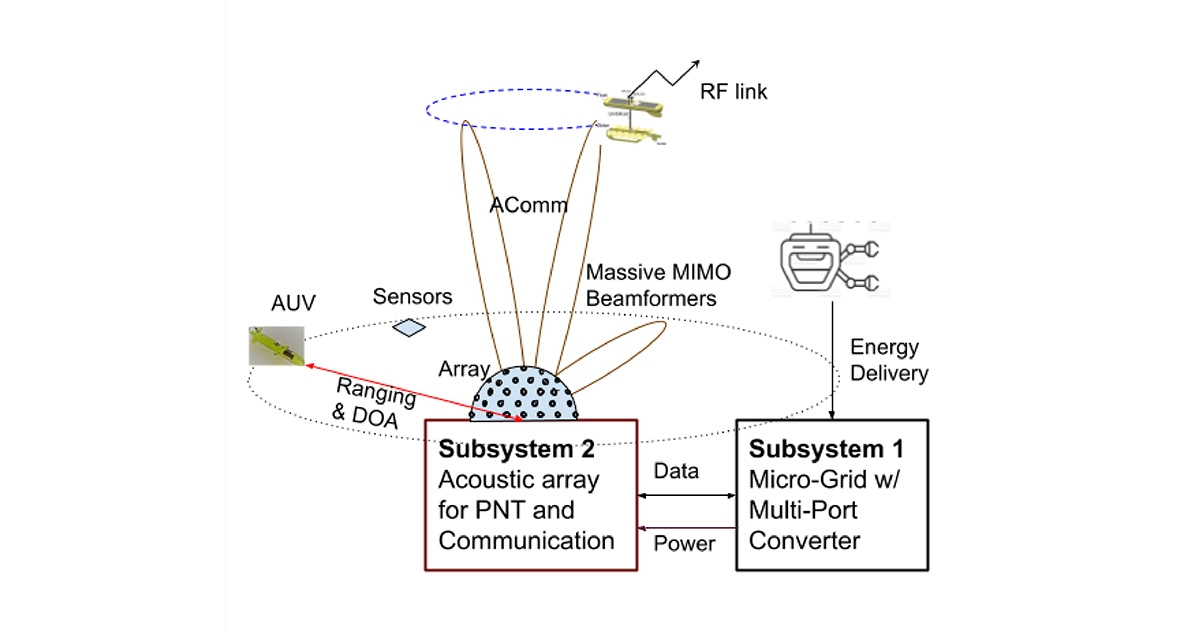National Science Foundation Awards Funds for Development of an Autonomous Observatory Node Prototype

The ocean is often considered the final frontier. In the past two decades, observatory sensor systems have been deployed off coastlines to collect and transmit a vast range of physical, chemical, geological, and biological data.
But these technologies are currently powered by subsea cables, which limits the distance they can operate from shore and, therefore, our knowledge of scientifically interesting areas.
“Each one of those nodes costs hundreds of millions of dollars, in large part because of the cables that support their power and communications,” says Yahong Rosa Zheng, a professor of electrical and computer engineering in Lehigh University’s P.C. Rossin College of Engineering and Applied Science. “The cost of running a cable from the shore is too prohibitive for studying the deep ocean.”
Zheng is leading an interdisciplinary, multi-university group of researchers who recently received support from the National Science Foundation’s Division of Ocean Sciences to develop a prototype of an Autonomous Observatory Node (AON) consisting of an underwater acoustic communication subsystem and an Underwater MicroGrid (UMG) subsystem.
“Think of it as a service station with a Wi-Fi hot spot,” says Zheng, who is an expert in underwater wireless communications and signal processing. “The node will have a power source for its sensors and autonomous underwater vehicles (AUVs) and the ability to transmit data up through the water to the internet.”
 ECE professor Yahong Rosa Zheng. (Image credit: Lehigh University)
ECE professor Yahong Rosa Zheng. (Image credit: Lehigh University)
Zheng heads the team developing the communications system. They plan to design an acoustic subsystem that will use numerous transducers—devices that convert energy, similar to how a loudspeaker converts a signal into sound waves—to receive data from seafloor sensors and AUVs. Those data will then be transferred to a glider that sits on the ocean’s surface. From the glider, the data will be transmitted to satellites and then to researchers’ computers.
The system requires a multitude of transducers, says Zheng, because the team intends to use high-frequency signals that can’t be detected by—or negatively affect—marine mammals. “Dolphins can hear up to 150 kilohertz,” she says, “so we’re aiming for an even higher frequency. But high frequencies can’t travel very far in water, which is why we use many transducers, each at low power, to transmit the data to the ocean’s surface.”
The goal is to create a deployable prototype capable of operating at 1000 meters, the same depth at which the cabled nodes operate.
“We want to show that our design is compatible with the current technology,” says Zheng. “But the ultimate goal, of course, is to go much deeper.”
Extreme depths pose expensive challenges as the node needs to be fortified to resist water pressure. Such depths also pose particular problems to the other half of Zheng’s team working on the underwater microgrid. That group is experimenting with rechargeable batteries, or fuel cells, to provide the system’s power and wireless charging for the AUVs.
The technical challenges are significant, but the potential applications of an autonomous observatory are vast. Data retrieved from the deep ocean could, for instance, enhance researchers’ ability to detect seismic activity and improve early warning systems for earthquakes.
“Something like this has never been built before,” says Zheng. “To this point, they’ve only been simulated. Our goal is to build the hardware and demonstrate that it works.”

